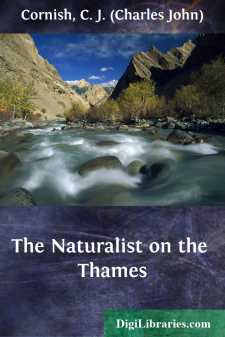Categories
- Antiques & Collectibles 13
- Architecture 36
- Art 48
- Bibles 22
- Biography & Autobiography 813
- Body, Mind & Spirit 142
- Business & Economics 28
- Children's Books 17
- Children's Fiction 14
- Computers 4
- Cooking 94
- Crafts & Hobbies 4
- Drama 346
- Education 46
- Family & Relationships 57
- Fiction 11829
- Games 19
- Gardening 17
- Health & Fitness 34
- History 1377
- House & Home 1
- Humor 147
- Juvenile Fiction 1873
- Juvenile Nonfiction 202
- Language Arts & Disciplines 88
- Law 16
- Literary Collections 686
- Literary Criticism 179
- Mathematics 13
- Medical 41
- Music 40
- Nature 179
- Non-Classifiable 1768
- Performing Arts 7
- Periodicals 1453
- Philosophy 64
- Photography 2
- Poetry 896
- Political Science 203
- Psychology 42
- Reference 154
- Religion 513
- Science 126
- Self-Help 84
- Social Science 81
- Sports & Recreation 34
- Study Aids 3
- Technology & Engineering 59
- Transportation 23
- Travel 463
- True Crime 29
The Naturalist on the Thames
Description:
Excerpt
THE THAMES AT SINODUN HILL
Fresh water is almost the oldest thing on earth. While the rocks have been melted, the sea growing salter, and the birds and beasts perfecting themselves or degenerating, the fresh water has been always the same, without change or shadow of turning. So we find in it creatures which are inconceivably old, still living, which, if they did not belong to other worlds than ours, date from a time when the world was other than it is now; and the fresh-water plants, equally prehistoric, on which these creatures feed. Protected by this constant element the geographical range of these animals and plants is as remarkable as their high antiquity. There are in lake Tanganyika or the rivers of Japan exactly the same kinds of shells as in the Thames, and the sedges and reeds of the Isis are found from Cricklade to Kamschatka and beyond Bering Sea to the upper waters of the Mackenzie and the Mississippi. The Thames, our longest fresh-water river, and its containing valley form the largest natural feature in this country. They are an organic whole, in which the river and its tributaries support a vast and separate life of animals and plants, and modify that of the hills and valleys by their course. Civil law has recognised the Thames system as a separate area, and given to it a special government, that of the Conservators, whose control now extends from the Nore to the remotest springs in the hamlets in its watershed; and natural law did so long before, when the valley became one of the migration routes of certain southward-flying birds. Its course is of such remote antiquity that there are those who hold that its bed may twice have been sunk beneath the sea, and twice risen again above the face of the waters.[1] It has ever been a masterful stream holding its own against the inner forces of the earth; for where the chalk hills rose, silently, invisibly, in the long line from the vale of White Horse to the Chilterns the river seems to have worn them down as they rose at the crossing point at Pangbourne, and kept them under, so that there was no barring of the Thames, and no subsequent splitting of the barrier with gorges, cliffs, and falls. Its clear waters pass from the oolite of the Cotswolds, by the blue lias and its fossils, the sandstone rock at Clifton Hampden, the gravels of Wittenham, the great chalk range of the downs, the greensand, the Reading Beds, to the geological pie of the London Basin, and the beds of drifts and brick earth in which lie bedded the frames and fragments of its prehistoric beasts. In and beside its valley are great woods, parks, downs, springs, ancient mills and fortresses, palaces and villages, and such homes of prehistoric man as Sinodun Hill and the hut remains at Northfield. It has 151 miles of fresh water and 77 of tideway, and is almost the only river in England in which there are islands, the famous eyots, the lowest and largest of which at Chiswick touches the London boundary.
After leaving Oxford the writer has lived for many years opposite this typical and almost unspoilt reach of the London river, and for a considerable time shot over the estate on the upper Thames of which Sinodun Hill is the hub and centre....


